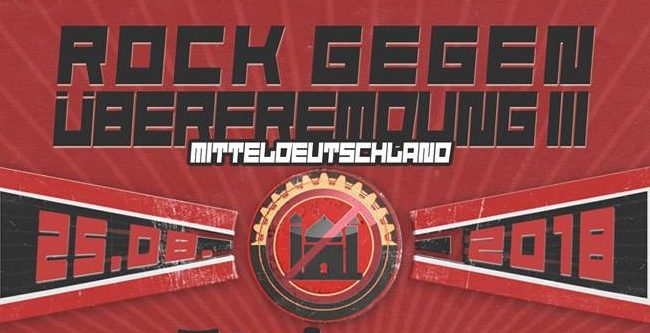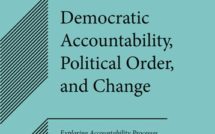

This is part of our special feature on Radicalism and Violence.
The radical right is currently flourishing across the globe. Positioned at the extreme end of this ideological spectrum are Hitler worshipping neo-Nazis. Back in the 1980s, these white supremacists created their own genre of music – White Power – which has since become an essential ingredient of neo-Nazi skinhead propaganda. Originated in Britain, these pounding rhythms soon spread across the continent and to the US (and beyond). Unsurprisingly, it has much the same racist undertones in whichever country or region it is made. This so-called Oi! scene presents an attitude of anger and aggression, rage and hatred, stressing the need for white survival, racial pride, and “Aryan” supremacy. It also celebrates white violence against ethnic/religious minorities and Jews. Three decades on, this hate-fueled music genre remains a thriving transnational entity and, to the concern of many, appears more popular than ever.
White power music concerts are a prominent part of the neo-Nazi scene. Last summer, for example, saw the largest neo-Nazi gig ever held in Europe. Over 6,000 visitors, paying €35.00 per ticket, attended the “Rock Against Überfremdung” festival (“Uberfremdung” roughly translated, means “swamped by foreigners”). The daylong event was held in the small German town of Themar.[1] The event featured international music acts, radical right political speakers – including from the German extremist party, National Democratic Party of Germany (NPD) – and an on-stage fighting lesson from the fascist Russian martial arts organization White Rex.[2] The Minister President of Thuringia (the state where the event was held), Bodo Ramelow, calculated that the rally took in between €300,000 and €400,000 ($344,000-$458,000).[3]
The long running promotion network, Blood and Honour (B&H), which dominates this international genre of racist music, continues to organize concerts and events across Europe. These range from “Summerfest” in Sweden; a “Day of Honour” in Hungary; the “Summer Solstice” in France; “Defend Europe” in Bulgaria; “15 Years” in Slovenia; the Ian Stuart Donaldson (ISD) Memorial in Britain and many others, attracting fascists from around the world. In fact, the majority of the audience attending the ISD Memorial concerts come from overseas.[4] Together with another popular neo-Nazi music promotion label, Hammerskins, B&H co-promoted in 2016, according to Hope Not Hate, “[o]ne of the most important international concerts” to date. This “Europe Awake” event was held in Milan, Italy – featuring bands from Britain, Germany, Italy and Sweden – attracting followers from all over Europe.[5]
Surprisingly given its terrifying history of fascism, Germany is currently at the center for European neo-Nazi music. The number of concerts and “song evenings” held in the country exceeds 150 per year, while German bands have appeared in no fewer than 63 gigs outside of their country. According to the German investigative journalist and one of the leading authorities on the radical right and their music, Jan Raabe, radical right music has made a comeback over recent years. He estimates that 15,000 people are “in the scene” in Germany; 200 “extreme right-wing bands and singer-songwriters” are active in the country; and that “German bands perform at almost all major European far right rock concerts.”[6] Most recently, German neo-Nazis held a rock festival (‘Schild und Schwert’) in the Polish border town of Ostritz to celebrate Hitler’s birthday (20 April). The event attracted up to a thousand radical right activists, many from across the border.[7]
Similarly, the US is experiencing a growth in white power music. Devin Burghart, a researcher at the Institute for Research and Education on Human Rights, who has tracked white supremacy within the music industry since the early 1990s, says there has been a spike in the number of white power bands playing since Donald Trump entered the political landscape. Burghart claims that the bands and their followers now feel “emboldened.” Due to this growing network of anti-racists and anti-fascists in the music scene, the “battle for the streets has suddenly seen an uptick.” Also monitoring American hate music activity is the Anti-Defamation League, which estimates that hundreds of white power bands play around the country at any one time.[8]
However, there is more to white power music than just hate-filled concerts and three-chord Oi! music. Neo-Nazis are successfully utilising the internet for their musical and commercial gain. B&H “worldwide,” for instance, has an operational website selling merchandise, books and magazine subscriptions, while hosting a radio show and web forum. The site gained 4,000 views in September 2017 alone.[9] In Germany, although B&H has been banned since 2000, new structures are both appearing and, increasingly, flourishing. Germany currently houses some 180 hate bands which, as with many mainstream bands, mainly distribute their music online via MP3 downloads and streaming links. Yet between them, these German groups also released nearly 100 CDs during 2016. Meanwhile, the sale of band merchandise (such as t-shirts, baseball caps, jewelry and other forms of insignia) has risen substantially.[10]
Interestingly, YouTube has become a key medium for disseminating white power music. This is so much the case that the New York Times has labelled the video-sharing website the “new talk radio” for the radical right.[11] In response to serial complaints, platforms such as iTunes and Spotify have recently removed such content from their platforms while Facebook and Twitter are notably clamping down on extremist content uploaded to their platforms. In 2017, a Digital Music News (DMN) investigation revealed 37 white power bands were selling their tracks on Spotify. Despite YouTube’s pledge to rid its site of “hateful content that promotes violence,” a more recent search of the same bands flagged by DMN shows that “every single one mentioned in the investigation is still available to stream on YouTube.” As Keegan Hankes, an analyst for the Southern Poverty Law Center, argues: “User-focused platforms like YouTube allow individuals to access white power music like no other platform.”[12]
The extent of hate music milieu’s current transnational activity as well as its growing worldwide popularity remains alarming. The scene is currently flourishing particularly in Europe, principally Germany, but also in Britain and the US. Although popular online music streaming companies and social media platforms now block or remove white power music content from their sites, adherents are still able to distribute music and merchandise through other mediums, most notably, YouTube and private websites. As long as online internet companies allow neo-Nazis to operate on their servers, it is likely that white power music will continue to be a thriving and, therefore, profitable industry.
Rob May is Doctoral Fellow at CARR, and is a Doctoral Researcher at Sheffield Hallam University.
References:
[1] www.vice.com/en_uk/article/mba43x/this-is-what-happens-when-6000-neo-nazis-gettogether
[2] https://www.i24news.tv/en/news/international/europe/150670-170717-neo-nazi-rock-festival-in-germany-attracts-over-5500-attendees
[3] http://www.dw.com/en/neo-nazi-concert-raises-free-speech-concern/a-39722439
[4] https://www.cambridge-news.co.uk/news/local-news/hundreds-attend-blood-honour-neo-12032973
[5] https://www.hopenothate.org.uk/wp-content/uploads/2017/04/HnH-2017-01-02-no30.pdf pp.73-73.
[6] Ibid; http://www.dw.com/en/neo-nazi-concert-raises-free-speech-concern/a-39722439
[7] https://www.ndtv.com/world-news/neo-nazis-hold-schild-und-schwert-or-shield-and-sword-rock-festival-in-eastern-germany-on-adolf-hitl-1840901; https://www.timesofisrael.com/hundreds-of-neo-nazis-gather-in-german-town-for-hitlers-birthday/
[8] https://www.citylab.com/life/2017/11/so-you-accidentally-booked-a-white-supremacist-band/545594/
[9] www.bloodandhonourworldwide.co.uk/bhww/
[10] https://www.hopenothate.org.uk/wp-content/uploads/2017/04/HnH-2017-01-02-no30.pdf pp.73-73.
[11] https://www.nytimes.com/2017/08/03/magazine/for-the-new-far-right-youtube-has-become-the-new-talk-radio.html
[12] https://www.vice.com/en_uk/article/xw7gaa/how-white-power-music-continues-to-thrive-on-youtube-v25n1
Published on October 2, 2018.




